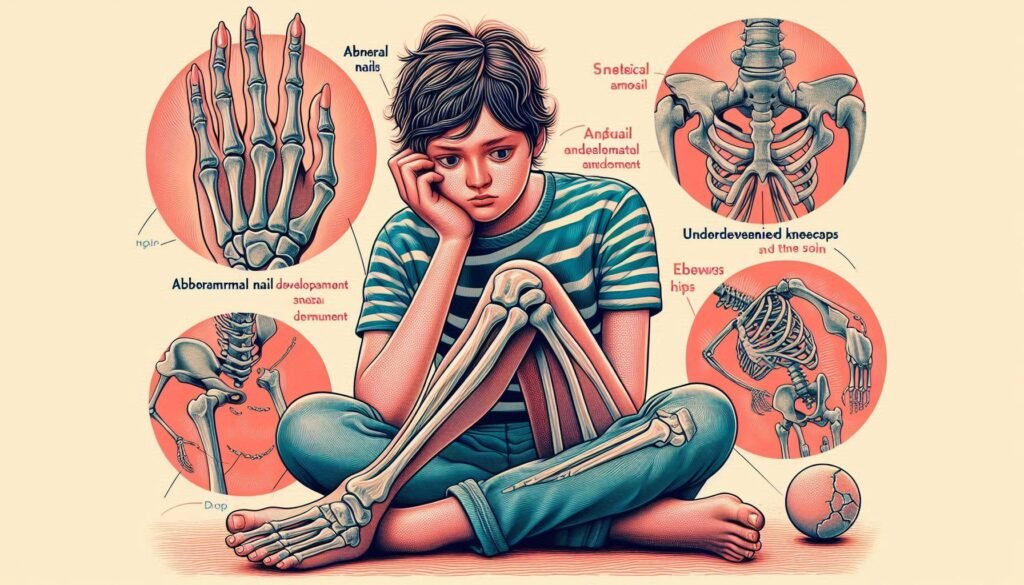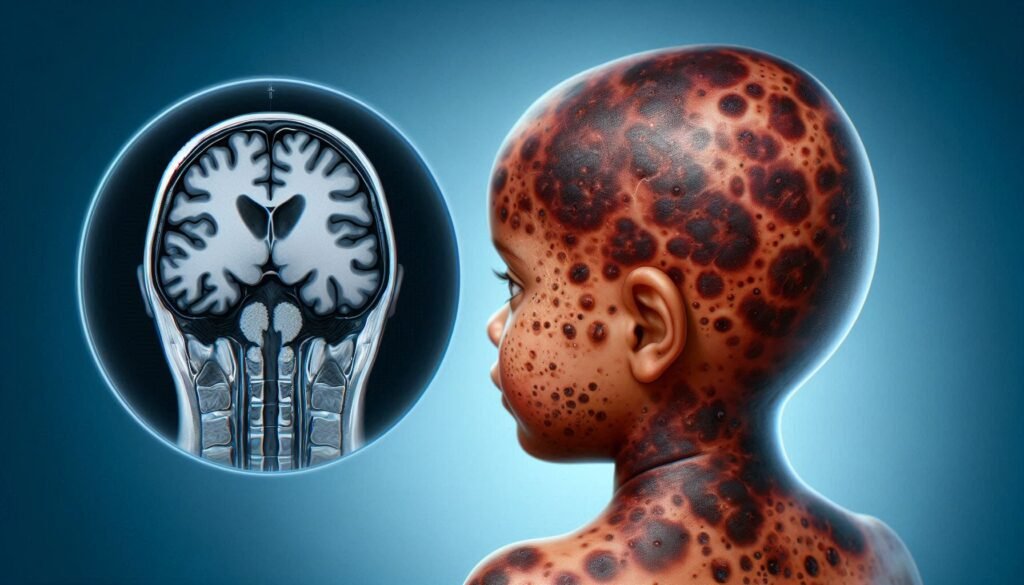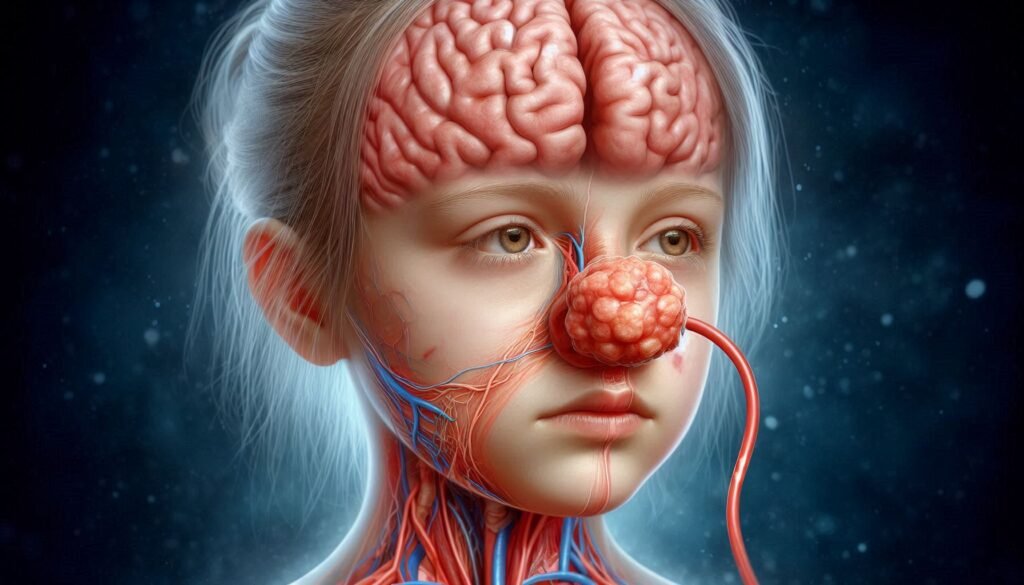Nail-Patella Syndrome is a rare genetic disorder that often flies under the radar, yet it has significant implications for those affected. This condition primarily impacts connective tissue and can lead to various health challenges throughout life. Understanding Nail-Patella Syndrome is crucial not only for individuals diagnosed with it but also for their families, healthcare providers, and society at large.
By shedding light on the complexities of this syndrome, we hope to raise awareness about its symptoms, management strategies, and the importance of early diagnosis. Knowledge empowers patients and caregivers alike in navigating this multifaceted condition. Let’s delve into what you need to know about Nail-Patella Syndrome—because informed awareness can make all the difference.

Nail-Patella Syndrome: A Rare Genetic Disorder of Connective Tissue
Nail-Patella Syndrome is a genetic disorder that affects connective tissues, leading to various physical manifestations. It is caused by mutations in the LMX1B gene, which plays a crucial role in the development of several body structures. Individuals with this syndrome may experience a range of symptoms affecting nails, bones, and kidneys.
This condition follows an autosomal dominant inheritance pattern. This means it can be passed down from one affected parent to their children. The prevalence is estimated at 1 in 50,000 births, making it relatively rare but significant for those impacted.
“What Causes Sudden Infant Death Syndrome? Prevention Guide”
Awareness about Nail-Patella Syndrome remains limited among both medical professionals and the general public. Understanding its implications can help improve diagnosis and treatment options for individuals living with this complex condition.
LMX1B Gene: Mutations and Their Impact on Development
The LMX1B gene plays a crucial role in the development of various body structures, particularly those related to connective tissues. Mutations in this gene are primarily responsible for Nail-Patella Syndrome (NPS). These mutations disrupt normal signaling pathways during embryonic development, leading to the characteristic features associated with the disorder.
“Why Does Takayasu’s Arteritis Syndrome Affect Blood Vessels?”
When LMX1B is mutated, it can alter the formation of nails and skeletal elements. As a result, individuals may experience missing or malformed patellae and specific nail abnormalities. The severity of these manifestations varies widely among affected individuals due to differences in mutation types.
Understanding how LMX1B mutations affect development enhances awareness of NPS’s complexities. This knowledge is vital for developing targeted treatments and effective management strategies tailored to individual needs.
Clinical Features: Nail, Skeletal, and Renal Manifestations
Nail-Patella Syndrome presents a distinct array of clinical features that affect multiple systems. Individuals often experience nail abnormalities, including missing or underdeveloped nails, which can be both physically and emotionally challenging. These changes are among the most recognizable signs of the disorder.
“How Does Tay-Sachs Syndrome Progress? Complete Guide”
Skeletal manifestations typically include patellar issues, such as absent or hypoplastic patellae. This results in knee instability and may lead to mobility challenges over time. As patients grow older, other skeletal deformities might also develop.
Renal complications arise due to involvement with connective tissues in the kidneys. Glomerulopathy is common among those with Nail-Patella Syndrome and requires careful monitoring for any symptoms of kidney dysfunction. Understanding these clinical features is crucial for proper management and care strategies.
Nail Abnormalities: Characteristic Findings in Nail-Patella Syndrome
Nail-Patella Syndrome presents notable nail abnormalities that are key indicators of the disorder. Patients often exhibit a range of changes, including hypoplastic or absent nails. These characteristics can vary widely among individuals.
“What Causes Thalamic Pain Syndrome? Treatment Guide”
Another common finding is the presence of longitudinal ridges and splits in the nails. Such alterations not only affect appearance but can also lead to discomfort or difficulty with grooming.
Additionally, patients may experience changes in nail color and texture, contributing to the overall variability seen in this syndrome. Identifying these distinctive nail features is essential for early diagnosis and effective management of Nail-Patella Syndrome.
Patellar Involvement: Absent or Hypoplastic Patellae
Patellar involvement is a hallmark feature of Nail-Patella Syndrome. Patients often present with absent or hypoplastic patellae, which significantly impacts knee function. The patella, or kneecap, plays a crucial role in stabilizing the knee joint and facilitating movement.
“Why Does Turner Syndrome Only Affect Females?”
In individuals with this condition, the absence of a fully developed patella can lead to altered biomechanics during activities like walking or running. This results in an increased risk of joint instability and potential complications over time.
Physical examination may reveal visible deformities and limited range of motion in affected patients. Orthopedic evaluations are essential for assessing knee function and planning appropriate management strategies, including physical therapy or corrective procedures when necessary.
Iliac Horns: A Pathognomonic Radiographic Feature
Iliac horns are a distinctive radiographic feature associated with Nail-Patella Syndrome. These bony projections, which occur at the iliac crest of the pelvis, can be seen on X-rays or CT scans. Their presence is a key indicator for diagnosing this rare genetic disorder.
“How Does Tarsal Tunnel Syndrome Affect Foot Function?”
The formation of iliac horns results from abnormal development in connective tissue due to mutations in the LMX1B gene. They vary in size and shape among individuals but remain a hallmark sign that medical professionals look for during imaging studies.
Recognizing iliac horns allows healthcare providers to better understand and diagnose Nail-Patella Syndrome early. This knowledge aids in developing comprehensive management plans tailored to each patient’s unique needs.
Renal Complications: Glomerulopathy and Its Management
Renal complications are a significant concern for individuals with Nail-Patella Syndrome. One of the most common issues is glomerulopathy, which involves damage to the kidney’s filtering units. This condition can lead to proteinuria, hypertension, and progressive kidney disease if not managed properly.
Early detection through regular monitoring of renal function is essential. Patients may require urine tests to assess protein levels and blood pressure checks to identify hypertension promptly. Lifestyle modifications, including dietary changes and maintaining hydration, can also help support kidney health.
In more severe cases, medical interventions may be necessary. Medications like angiotensin-converting enzyme (ACE) inhibitors can help control blood pressure and reduce protein loss in urine. Regular consultations with nephrologists ensure appropriate management plans tailored to each patient’s needs.
Ocular Involvement: Glaucoma and Other Eye Abnormalities
Ocular involvement is a notable aspect of Nail-Patella Syndrome, with glaucoma being the most common eye abnormality. This condition can lead to increased intraocular pressure, potentially resulting in vision loss if not addressed promptly. Regular ophthalmologic evaluations are essential for early detection.
In addition to glaucoma, individuals may experience other ocular abnormalities such as cataracts and retinal issues. These complications require careful monitoring and management by specialized healthcare providers.
Patients should be aware of these risks and discuss any visual changes with their doctors. Early intervention can greatly improve outcomes and maintain quality of life for those affected by Nail-Patella Syndrome. Understanding the full spectrum of ocular manifestations allows for better preparation and proactive care strategies.
Diagnosis: Clinical Criteria and Genetic Testing Approaches
Diagnosing Nail-Patella Syndrome often begins with a thorough clinical evaluation. Physicians assess physical characteristics, including nail and skeletal abnormalities. A detailed medical history is also crucial for identifying patterns consistent with the syndrome.
Genetic testing plays an essential role in confirming a diagnosis. Specifically, analysis of the LMX1B gene can reveal mutations associated with Nail-Patella Syndrome. This step not only provides clarity but also informs potential management strategies.
Healthcare providers may use specific criteria to guide their diagnostic process. It’s important for patients and families to discuss symptoms extensively during consultations, ensuring that all relevant information is considered for accurate diagnosis and subsequent care planning.
Orthopedic Management: Addressing Skeletal Abnormalities
Orthopedic management for Nail-Patella Syndrome focuses on addressing skeletal abnormalities through a tailored approach. Patients often experience issues such as joint pain, limb deformities, and limited mobility due to their unique skeletal structure. Interventions vary based on individual needs and severity.
Physical therapy is commonly recommended to enhance strength and flexibility. Specific exercises can help improve function while minimizing discomfort. In some cases, orthopedic devices like braces or splints may be necessary to support affected joints during daily activities.
Surgical options are available for more severe cases where structural corrections are essential. Procedures might include realignment of bones or joint replacements aimed at enhancing quality of life. A multidisciplinary team ensures comprehensive care throughout the treatment process.
Nephrology Care: Monitoring and Treating Kidney Involvement
Nephrology care is crucial for individuals with Nail-Patella Syndrome, as they may experience kidney complications. Regular monitoring of renal function through blood tests and urine analysis helps detect potential issues early. This proactive approach can significantly improve patient outcomes.
Patients may develop glomerulopathy, which requires careful management. Treatment options often include medications to control blood pressure and protein levels in the urine. Healthcare providers will tailor strategies based on individual needs.
Lifestyle modifications play a key role in managing kidney health. Staying hydrated, following a balanced diet low in sodium and protein, and maintaining a healthy weight are essential steps for patients dealing with renal involvement. Education about these changes empowers individuals to take charge of their well-being.
Genetic Counseling: Inheritance Pattern and Family Planning
Genetic counseling is crucial for families affected by Nail-Patella Syndrome (NPS). This rare genetic disorder follows an autosomal dominant inheritance pattern. This means that one copy of the mutated gene from either parent can result in the condition in offspring.
Counselors help families understand their risks and options. They provide detailed information about how NPS may be inherited, assisting potential parents in making informed decisions. Knowing family history plays a pivotal role in assessing these risks.
For those with a family history of NPS, prenatal testing options are available. These tests can identify whether a fetus carries mutations associated with the syndrome. This proactive approach allows individuals to better navigate their choices regarding family planning and ensure broader awareness within the community.
Quality of Life: Living with Multiple System Involvement
Living with Nail-Patella Syndrome can present unique challenges due to its impact on multiple systems. Patients often face physical limitations, which may affect daily activities and overall mobility. This can lead to frustration and a feeling of isolation.
Emotional well-being is also crucial for individuals managing this condition. Support from family, friends, or support groups can help ease feelings of anxiety or depression associated with chronic illness. Open communication about experiences fosters understanding and connection.
Adaptations at home and work play an essential role in enhancing quality of life. Utilizing assistive devices or modifying environments allows for greater independence while minimizing discomfort during tasks. Emphasizing self-care practices is vital for maintaining both physical health and emotional resilience.
Pain Management: Strategies for Joint and Back Pain
Managing pain in individuals with Nail-Patella Syndrome often requires a multifaceted approach. Joint and back pain can be persistent, so it’s essential to explore various strategies tailored to each patient’s needs.
Physical therapy plays a crucial role in enhancing mobility and strength. Targeted exercises can help alleviate discomfort while promoting better range of motion. Additionally, low-impact activities like swimming or cycling may reduce strain on the joints.
Medications such as nonsteroidal anti-inflammatory drugs (NSAIDs) can provide relief from acute flare-ups. In some cases, healthcare providers might recommend topical analgesics for localized pain management. Combining these methods helps improve quality of life for those living with this condition.
Psychosocial Aspects: Coping with a Lifelong Condition
Living with Nail-Patella Syndrome can present various psychosocial challenges. Individuals may experience feelings of isolation due to the rarity of the condition. This can lead to difficulties in finding relatable support networks.
Engaging in open conversations about their experiences is essential for emotional well-being. Connecting with others who have similar conditions through online forums or local support groups fosters a sense of community and belonging.
Additionally, mental health resources play a crucial role in coping strategies. Professional counseling can provide tools for managing anxiety and depression that may arise from living with a lifelong condition. Building resilience is key, enabling individuals to navigate daily life while embracing their unique journey.
Latest Research: Molecular Pathways and Potential Therapies
Recent studies have illuminated the molecular pathways involved in Nail-Patella Syndrome (NPS). Researchers are focusing on the LMX1B gene, which plays a critical role in development. Understanding how mutations affect this gene can lead to better-targeted therapies.
Investigations into signaling pathways associated with connective tissue formation are ongoing. These insights may pave the way for new treatment options that could improve outcomes for those affected by NPS.
Current research is also exploring pharmacological interventions aimed at mitigating symptoms related to skeletal and renal complications. As science progresses, hope grows for innovative strategies that enhance quality of life for individuals living with this rare disorder.
Multidisciplinary Care: Coordinating Specialists for NPS Patients
Multidisciplinary care is crucial for managing Nail-Patella Syndrome effectively. This approach involves a team of specialists from different medical fields working together to address the various symptoms and complications associated with this rare genetic disorder.
Patients often benefit from input from orthopedists, nephrologists, ophthalmologists, and genetic counselors. Each specialist plays a vital role in providing comprehensive care tailored to the individual’s needs. Orthopedic assessments help manage skeletal abnormalities while nephrology consultations ensure proper monitoring of kidney health.
Psychosocial support should not be overlooked. Accessing mental health professionals can assist patients in coping with the complexities of living with multiple system involvement. Coordinating all these specialties creates a cohesive treatment plan that optimizes overall well-being.
For those living with Nail-Patella Syndrome, understanding that a collaborative healthcare model exists offers reassurance. Engaging with various experts enhances patient education and empowers families as they navigate their unique journeys.


